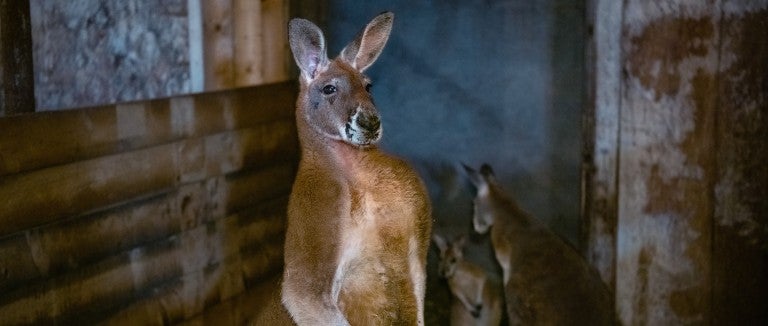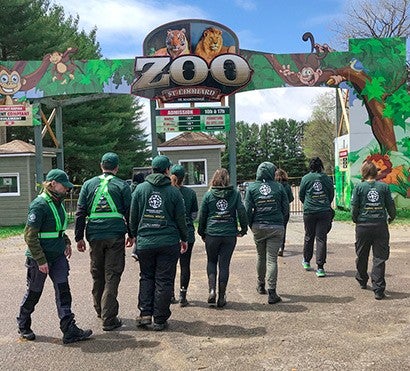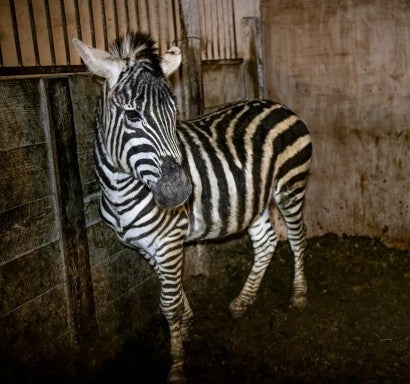|
WARNING: This page contains graphic content. |
When rescuers slowly creaked the rusty door open, the dilapidated building appeared to be empty. Windowless and dark, the sheet-metal structure held no noise, only air thick with spiderwebs, dust and the burning smell of ammonia. Then a head with small ears popped into the slice of sunlight, tiny eyes blinking rapidly to adjust. The baby kangaroo lifted his nose to sniff the fresh air while his mom cautiously hopped out of the shadows.
It’s been more than three years since this scene unfolded at a roadside zoo in Canada. Now the story can finally be told.
From the outside, the zoo appeared to be a fun, family-friendly attraction. But that’s the problem with roadside zoos—visitors never see the whole picture.

Nearby, rescuers found a nervous emu they named Nemu. His overgrown enclosure was prone to flooding and received very little sunshine, leaving it perpetually muddy, with only a rickety, waste-filled barn for shelter.
A nilgai named Norman also had a small, ramshackle barn as his only shelter in an area vulnerable to floods after heavy rainfall. He followed responders who passed by along the fence of his enclosure until he reached the end, seemingly desperate for companionship and an escape from his miserable surroundings.
Douala, a lioness, and tigers Serenity and Theodora paced inside their barren enclosures while keeping a careful eye on rescuers as they moved about the property. The big cat area was poorly designed and constructed, fraught with weakened spots from the animals’ nervous chewing—putting the big cats, their caretakers and the general public at great risk.
Theodora and Serenity, most likely sisters, both showed characteristics of inbreeding, sadly a common practice in roadside establishments. Theodora had a slight head tilt, making her head appear wobbly as she walked, and Serenity had a perpetual squint in one of her eyes.
“It’s extremely difficult to provide these animals with the environment, diet and enrichment they need,” said Adam Parascandola, vice president of our Animal Rescue Team, while walking the grounds the day of the rescue. “It’s heartbreaking to see them in these conditions.”
Thankfully, this is not where the story ends.
The kangaroo family, Zuko, Wolfgang, Nemu, Norman, Douala, Serenity and Theodora are all living their best possible lives at Black Beauty Ranch, our sanctuary in Texas. Sadly, George was unable to travel across the border because of his health—HSI/Canada continues to provide care for him while seeking a permanent home. The other animals are safely living out their days elsewhere across North America.
In a sanctuary full of bold, playful animal personalities, the new residents stood out when they first arrived. The animals seemed timid, with dull coats and weak muscle mass, says Dee Owen, former director of animal care at Black Beauty Ranch.
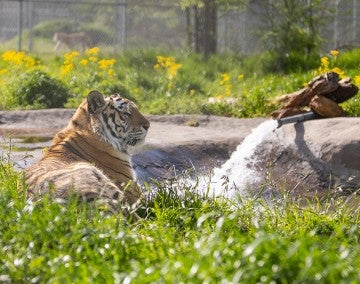
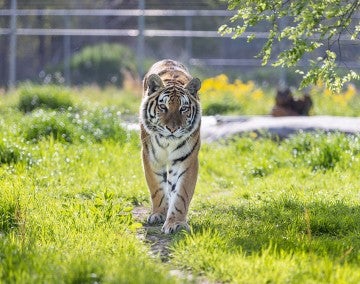
For the first few months after their arrival, Theodora and Serenity had little energy and spent most of their time lying on their platforms. Slowly, the tigers became more comfortable and began exploring their new home, discovering a shared affinity for playing in water. Looking at them now, Owen says there’s a “night-and-day difference.” “They’ve really developed personalities,” she says.
Recently, the tigers were moved to a larger, three-acre enclosure with a small pond. One day sanctuary staff found the tigers covered in mud after a long play session in the pond, Owen says.
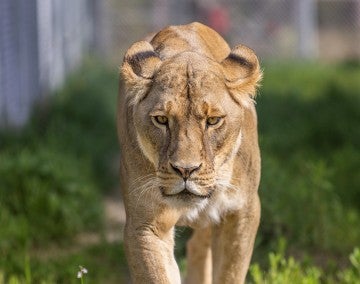
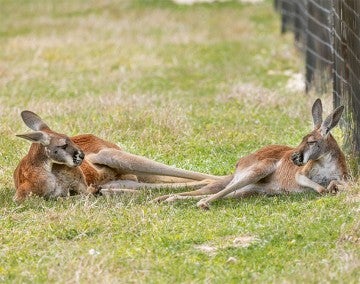
The other animals have come out of their shells, too. Douala the lioness can be heard from over a mile away, roaring for breakfast as the sun rises. In their enclosure near the front office, the kangaroos spend their days basking in the sun and hopping around. A large, grassy field provides ample space to exercise their powerful hind legs. When they want a break from the sun, they can lounge under a cluster of sunshades or in their open-door shelter.
The kangaroos have even welcomed a new member to their family. Little Chandler arrived at Black Beauty Ranch so young he was still in his mother’s pouch. The family is blossoming together, Owen says. Ross has become the leader of the group and looks after the family.

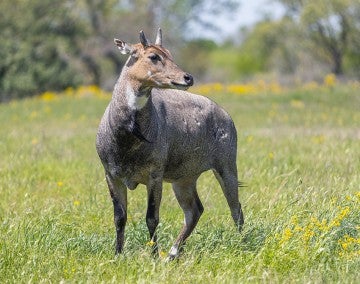
Zuko and Wolfgang, both found in isolation at the zoo, now live next to each other and have become constant companions. Despite being separated by a fence for safety reasons, the two animals spend most of their time standing side-by-side across the partition. Zuko also has addax companions within his enclosure and shares a fence line with two nilgais: Norman, who also came from the zoo, and Nigel, a longtime sanctuary resident. Nigel’s former herd mates had passed away from old age, but Norman’s arrival gave him the chance to interact with another nilgai. The two quickly bonded, and young Norman acts as the protector of geriatric Nigel.
The rescued animals are almost unrecognizable from the reserved individuals who arrived at the sanctuary between 2019 and 2020. Their story started in the shadows of dark sheds and cramped stalls, but at Black Beauty Ranch that story continues to unfold as they heal in the light.
You can help us care for these animals and continue all our lifesaving work. Donate
Want more content like this?
This was written and produced by the team behind All Animals, our award-winning magazine. Each issue is packed with inspiring stories about how we are changing the world for animals together.
Learn MoreSubscribe
